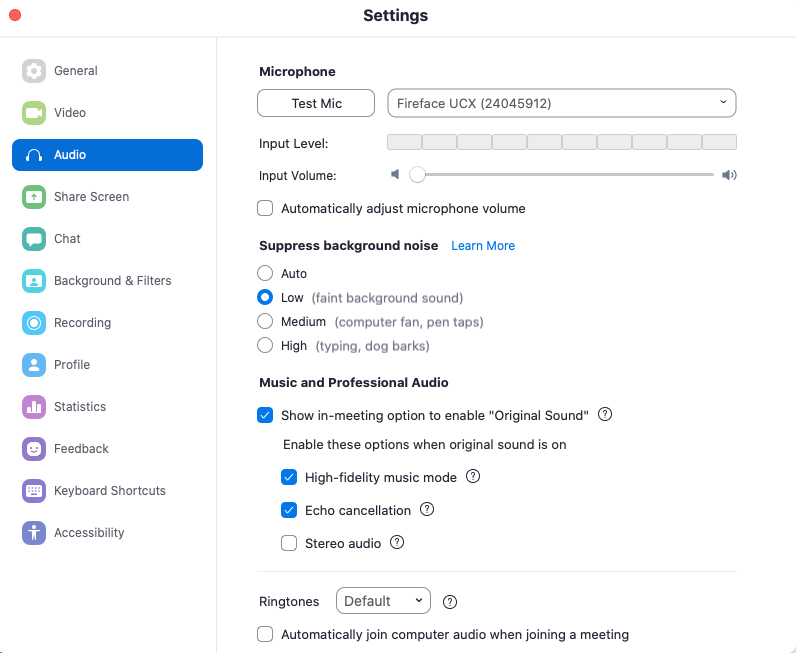We are in what feels like semester 1 trillion of Zoom teaching. I don’t know about you, but I’m still talking with people about engaging students online. Here are a few things that have come up. It’ll be elementary for some readers but useful for others.
This post is adapted from a conversation I was having on Facebook and a Zoom call with a friend coming off sabbatical that happened yesterday. My Facebook friend was frustrated because students weren’t turning on their cameras; my Zoom friend was just worried about doing a good job and not getting tripped up in his performance. I’ve added in stuff and developed a few things.
- If they are going to have their cameras off, I ask them to please have an avatar–a picture of themselves, a pet, or a beautiful place. That way I’m not looking at black boxes. It’s actually really nice. I always take a few minutes the first day and let one of the students who knows how explain to the other students. I still associate some of my students with their pet pictures from last term.
- McGill students LOVE to be polled. This is an easy way to get things happening in class. I poll them on serious things, I poll them to see how they’re doing, and I poll them on jokey things. This also gets them involved. There are other collaborative things we can do too: google docs, jamboards, etc. It’s not think-pair-share, but this fall I did a couple generative exercises on jam boards and referred back to them all term.
- The chat function also works very well as a backchannel. The chat has been a revelation. I tried a Twitter backchannel one term years ago and didn’t like it at all, but this is somehow different. In my lecture course a few students who rarely spoke supplied a steady stream of emoji and text reactions. It was great. If you have a TA, they can monitor the channel and interrupt proceedings every so often. If you don’t have a TA, stop every so often and respond to the channel if something good is in there. NOTE: there will always be someone who needs to be trained. I had to explain a couple times that the chat wasn’t for asking off-topic questions (requirements, procedures, etc). That’s what office hours is for. Keep in mind that they may just not know and it’s not necessarily intentionally being rude. (Though you’d hope by now that wasn’t the case.)
- In my case, letting them see my sense of humour even more than usual has been a godsend and encouraged them to bring levity to the proceedings, which keeps it fresh for me. Maybe this is an “I’m an extroverted white dude” thing but there is probably some slightly exaggerated part of your personality that could be helping out with classroom hospitality. I have a giant stuffed unicorn in my background at all times. His name is Mr. Twinkles The Destroyer. (He’s a gift from Carrie and he is a Covid unicorn.) I also use other props from time to time. Your mileage may vary with that sort of thing.
- You have to consider that there may be reasons they don’t want the camera on. Some people don’t know how to hide self-view on Zoom and seeing themselves all day on camera is super stressful. PRO TIP: hide yourself as well. You haven’t spent your career watching yourself teach–why start now? Social class issues come up depending on where they’re connecting from, and that can also affect whether they can talk. Last term, I had a bunch of students logging in from places like the library as well. For discussion and Q&A I let people type into the chat.
- Some will just check out–at least from your perspective. Teach to the ones who are there for it and make it as great as can be for them, but also for the people who might watch later or who can’t interact for whatever reason. Nick Seaver pointed out on the thread that it’s more like the performance of a dialogue for the other students, and it is very helpful for students to hear multiple people talking about ideas and not just you. That’s all you can do but it’s also a real thing. Students will go back to the recordings, and people who weren’t there will listen as well.
- Remember that you’d just not going to cover as much. I decided I was going for trying to reproduce the depth of engagement, but to let go of covering as many topics. That’s just how it is.
- One thing that I’ve noticed is it’s somehow harder to go “back to the text” in Zoom. This is because often students are using the same device to connect to Zoom and to look at the text. I am talking about it with my students this term and we will try different things: putting passages up on screen for everyone (if they’re visible), getting people to use multiple devices, collectively switching from Zoom to the text, or doing it in audio-only.
- Bonus round: audio and video media. Yes, I know, visual culture blablablabla. Trust me, sound is what matters on Zoom. This is a little more technical. In my lecture class, I play them music on breaks. I use a Loopback function with my audio interface. If you’re on a Mac, loopback also works well for this. If you’re going to play music for them, go into your Zoom audio settings, and set them up as in the image below. You don’t want to turn on stereo as that doubles everyone’s bandwidth consumption.

Once you’re set up this way, there will be an option in the upper left-hand corner of your Zoom window to turn on original sound.
To play music, it’s best to have it on your computer rather than to stream it (otherwise you get compounding compression artifacts). THIS IS ALSO TRUE FOR STREAMING VIDEOS. Turn on original sound, hit play. When you’re done, turn off original sound. Otherwise, they’ll hear every time your hand hits your trackpad.
Many of my friends in film studies just send the students to the video directly, rather than streaming it in class. This also works, and you can leave the chat function on in Zoom while everyone is watching.
Some additional thoughts: In fall 2020, I initially erred on the side of breaking down big assignments into too many small components. It felt, and was, micromanagey and destroyed the intellectual flow of some of the work. But in winter 2021 I overcompensated and found by the end of term some of my students were a little lost on the semester project–they just didn’t have it in them to impose that level of structure after 18 months on Zoom. A semester long project is really going to need some careful guidance to work for most students.
